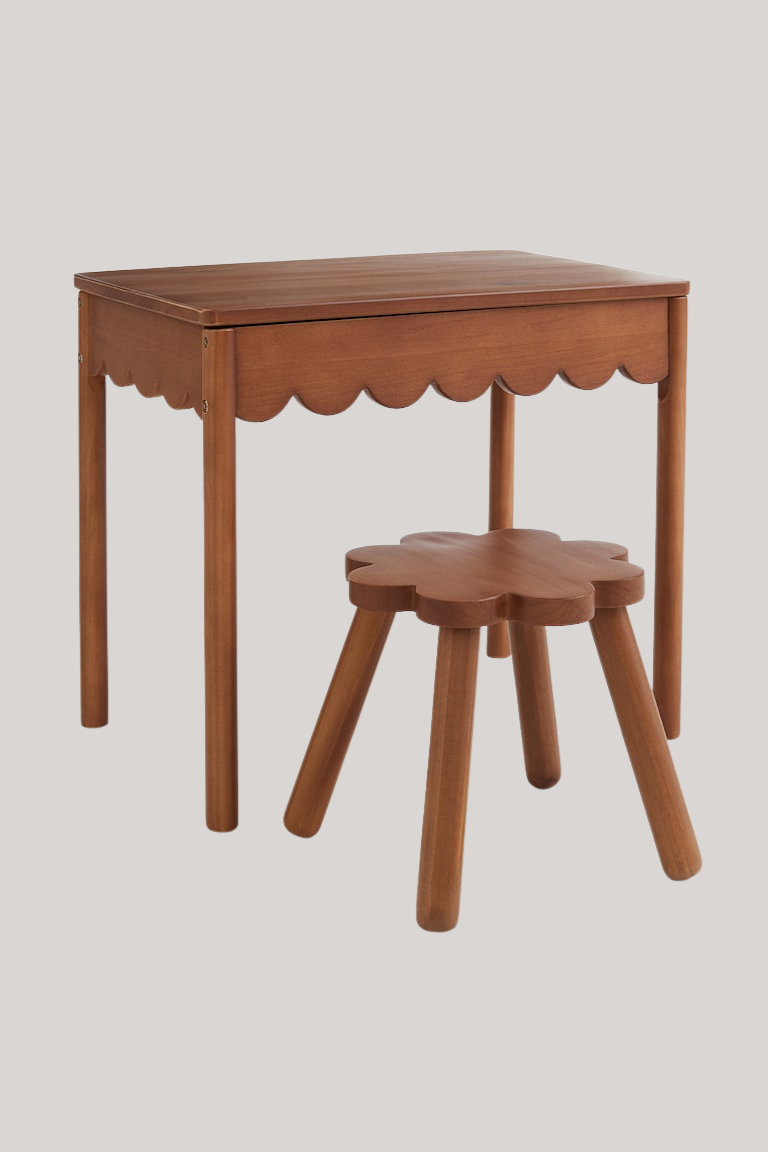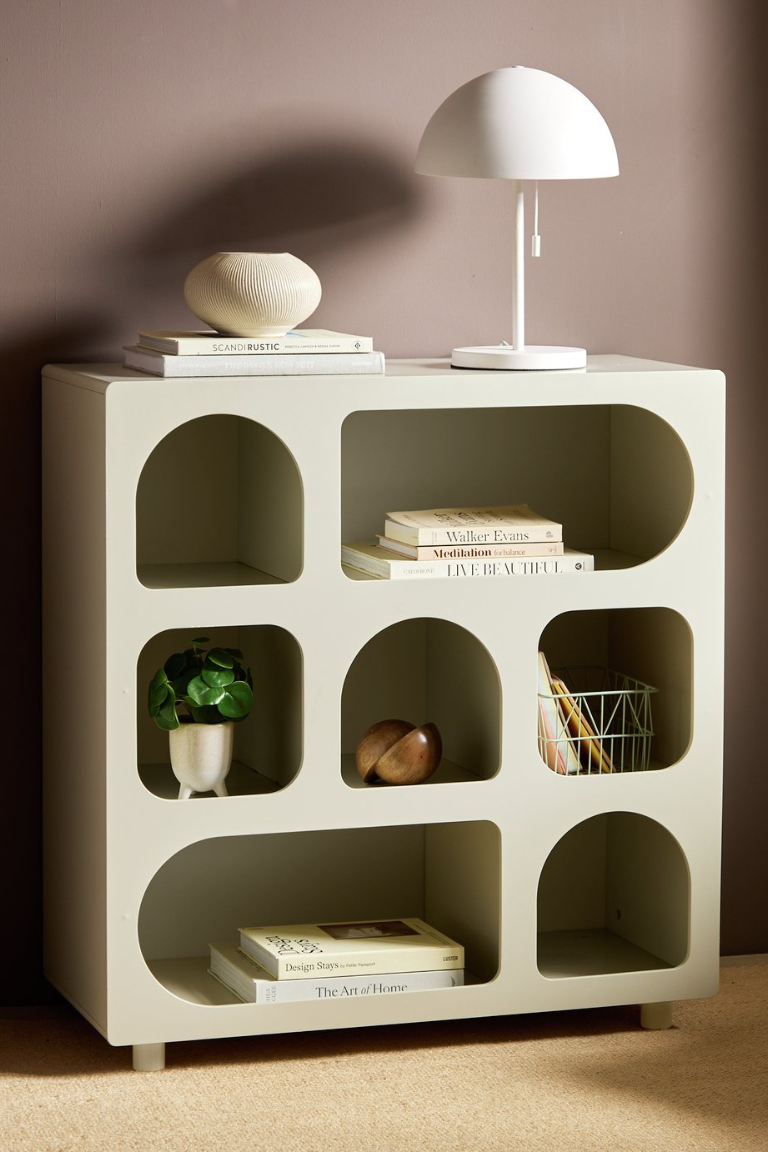Oh, To Be a Child Again — These 10 Homes Prove That Kids' Rooms Can Be Just As Stylish As the Rest of the Home
Looking for children's room ideas? Take inspiration from these interiors that showcase creative design that is both playful and personal


As a mum of three girls, I know how tricky it can be to find inspiration for kids' room ideas that are fun and evoke joy, while also being a personal, inherently stylish sleep sanctuary that aligns with the tone and feel of the rest of the home.
That's where the Livingetc archives come in. These children's rooms are featured in some of our favorite, innovative homes that we’ve toured, and showcase the power of harnessing creativity in both clever and practical ways.
From children's room storage ideas to inspirational design and decor, the kids' room ideas in these modern homes deserve a spotlight.
1. A Playful Bunk Bed in This Parisian Apartment
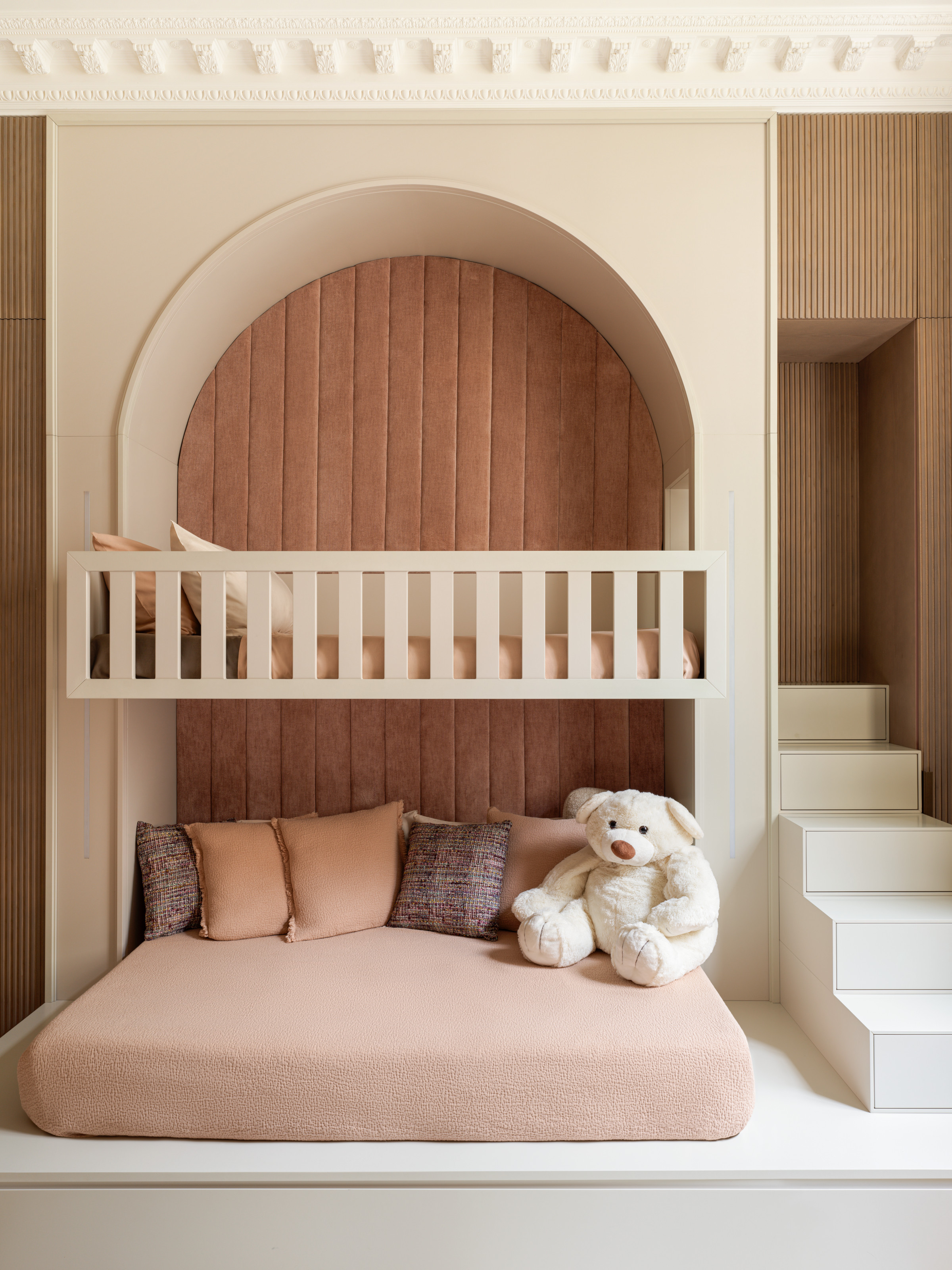
The hidden storage in the staircase is a thing of beauty.
Tour this Art-Deco inspired apartment in Paris.
This children's room was designed by Parisian interior designer Kelly Boukobza, founder of KY Architecture, where the owners had instructed her — as with the whole apartment — to 'decorate the space as if it were [her] own'. And this kids' room idea was her highlight, calling the bunk bed her 'creation of the year.'
Not only is there a storage drawer concealed in each of its steps, but there is also a third mattress hidden in the structure's base for when the girls have a sleepover. Genius.
2. A Whimsical Mural in This Luxury London Flat

A space filled with softness and texture that exudes timeless elegance.
Tour this luxury flat in London.
The Livingetc newsletters are your inside source for what’s shaping interiors now - and what’s next. Discover trend forecasts, smart style ideas, and curated shopping inspiration that brings design to life. Subscribe today and stay ahead of the curve.
Designer Olga Ashby designed the luxury London flat that features this beautiful kid’s room idea, for a working mother of two who wanted her children to have the biggest bedrooms. "We chose a design that would work in teenage years, too," says Olga.
This whimsical wall mural brings the whole space together and reminds Olga of a contemporary take on the tapestries found adorning the castle walls in Scotland and England.
3. A Climbing Wall in This Hamptons Vacation Home

Never before has a beanbag commanded as much attention.
Tour this neutral-hued Hamptons home.
The kids' room in this vacation home in the Hamptons was designed by New York-based interior designer Hilary Matt for her sons.
"The rock climbing wall is a really fun element in the winter when they’re inside, and even in the summer with their friends — I get nervous every time they’re on there, but I think it looks cool!" says Hilary.
4. An Ethereal Masterpiece in an Upstate New York Home

If you like the bed, the Marietta King Bed at Urban Outfitters is currently on sale.
Tour this weekend home in Hudson Valley.
"Our daughter is almost 15, and she approved the wallpaper herself," says Britt Zunino, co-founder with her husband Damian of New York-based architecture and interior design studio, Studio DB, of this bedroom they designed for their daughter. "It has such a pretty color gradient."
This space perfectly harmonizes both a calm and playful feel — a dreamy space with lots of character and a touch of magic.
5. A Swing Chair of Dreams in This Kentucky Home

The natural finishes and earthy color palettes bring a depth of warmth to this children's room.
Tour this adventurous family home in Kentucky.
Soft, warm, comforting, and playful — this cozy bedroom had a lot of input from interior designer Bethany Adams' daughter herself, who chose many of the materials and designs.
“Her first selection was Backdrop for Schumacher's Bloomsbury wallpaper, which set the tone for the entire project,” says Bethany.
6. A Monochromatic Theme in This Connecticut Home


https://www.livingetc.com/feature/connecticut-home-with-limewash-color-walls
Tour this monochromatic home in Connecticut.
In contrast to the girl’s bedroom in this family home in Connecticut (which is color-drenched in pink), this boy’s bedroom is almost entirely blue.
Susana Simonpietri, creative director of Brooklyn-based interior design studio Chango & Co., was allowed to go more saturated with her color choices and be more playful for the kids' rooms. I love the pops of unexpected red in the table lamp and cushion.
7. Colorful Bunk Bed Havens in This Southern Californian Home

The curtains for each bunk are everything.
Tour the eclectic interiors in this Southern Californian home.
This family home in Southern California was a collaboration between Regan Baker, founder of interior architecture and design studio Regan Baker Design, and architect Eric Olsen.
With clever design details throughout, this kids' room idea is no exception. The custom bunk bed was painted in Benjamin Moore's soothing 'Garden Path' with built-in storage in the bed's base, allowing for more floor space for playing.
8. A Multifunctional Space in This Tribeca Townhouse
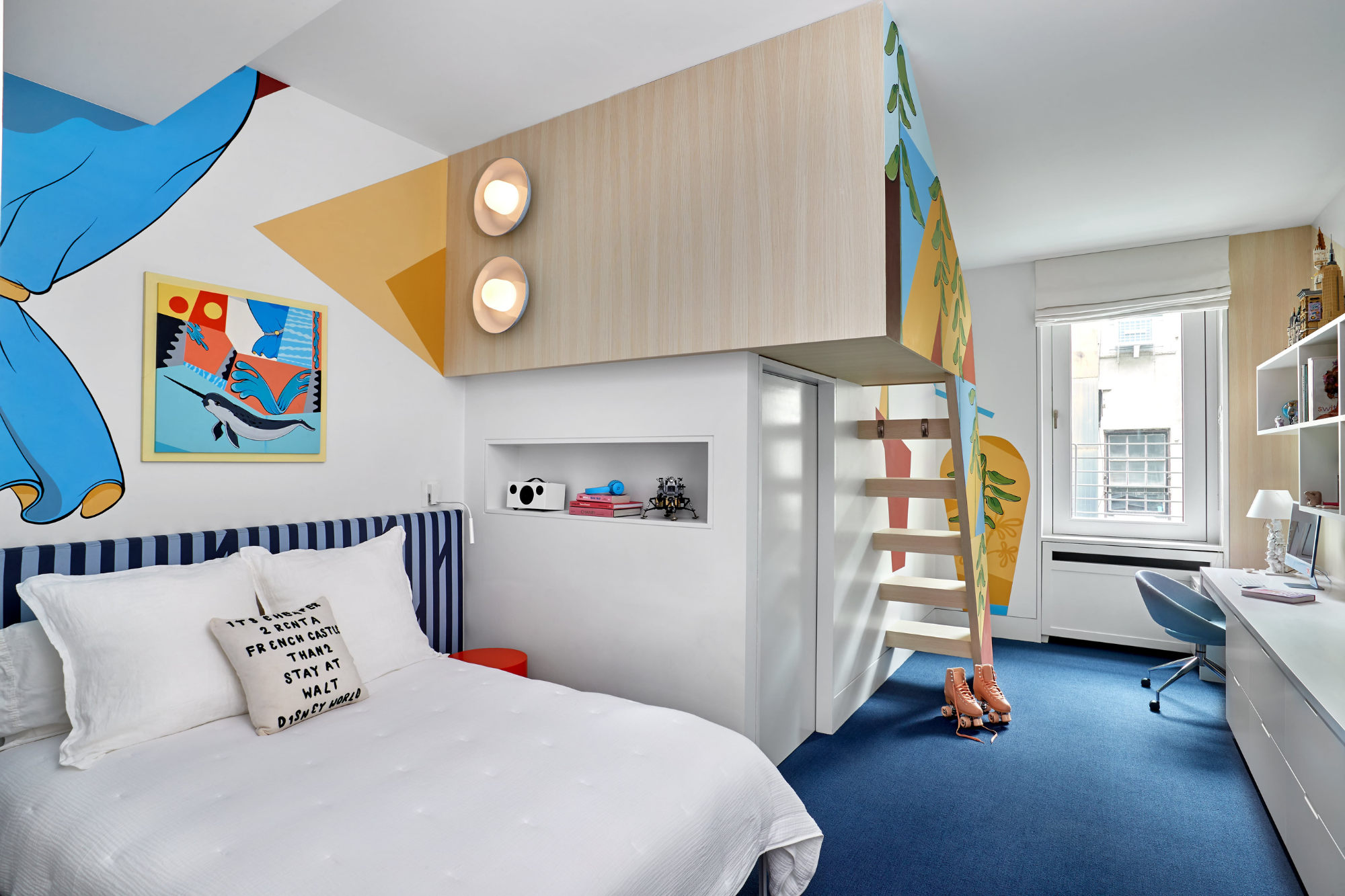
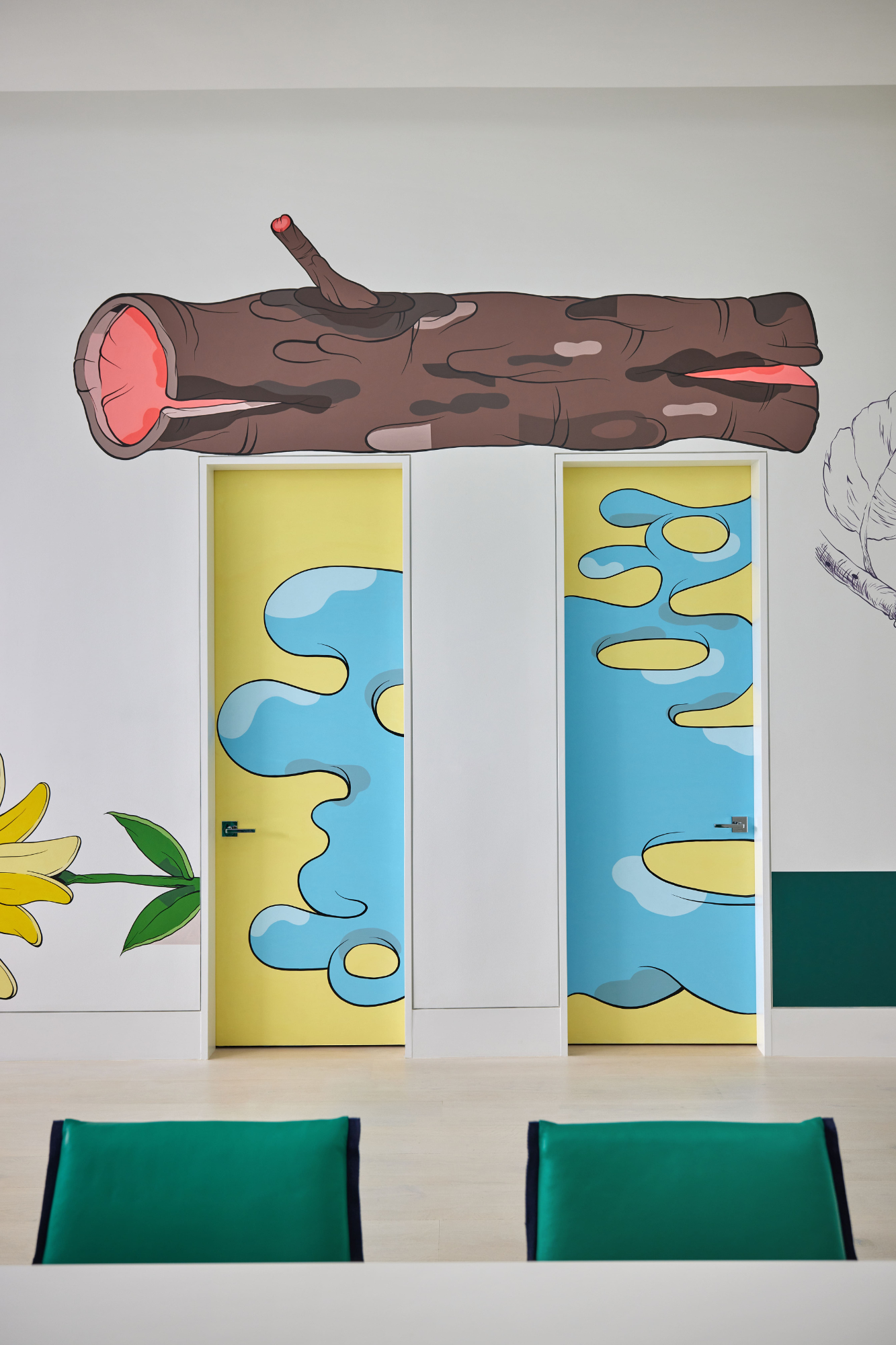

https://www.livingetc.com/feature/tribeca-house-tour-ghislaine-vinas


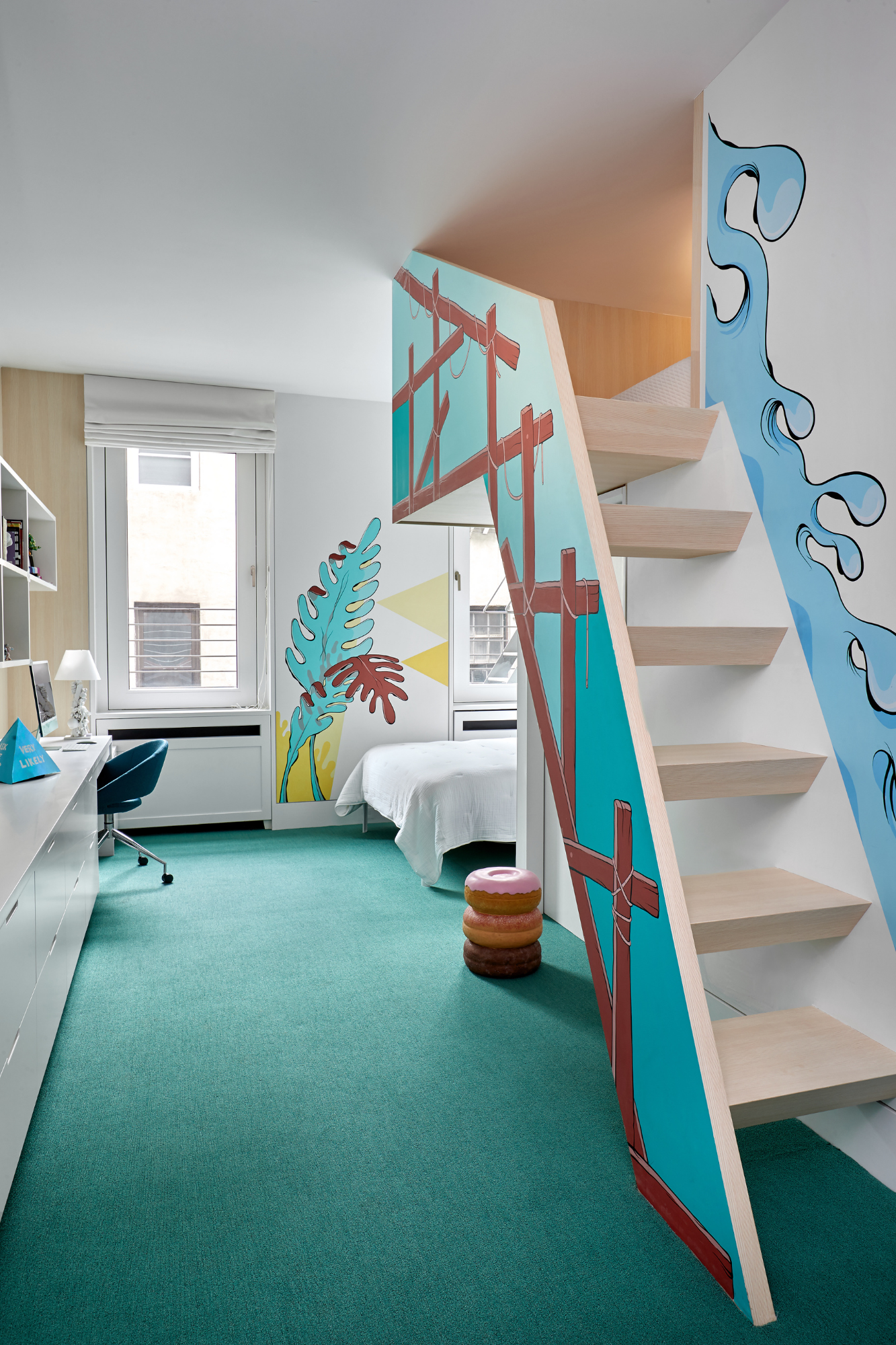
Tour this Maximilist Tribeca townhouse.
"The space mirrors the twins," award-winning designer Ghislaine Viñas explains of the interconnected space she designed for her client's twins. "They still have their own privacy but have a loft-like connection in the room."
Each of the rooms is decorated with a custom mural from artist Mark Mulroney, and the entire space is certainly the standout in this townhouse in New York City.
9. Grown-Up Chic in This Parisian Home


Tour this Parisian home with the most incredible shelving.
Designed by Nildo José Virgínia Lopes, Danielle Groszamann, and Anna Clara of Brazil-based NJ+ Architects, Nildo says, "The French clients, with three teenage children, wanted a home with personality and a mix of Brazilian art, architecture, and furniture."
The designers were inventive with their joinery to ensure the small bedroom layout of this teenager's bedroom was infinitely functional, optimizing space and storage wherever possible, while the warm color palette gives the room softness and a sense of calm.
10. Pattern Play in this Manhattan Home



Tour this three-apartments-become-one redesign in Manhattan.
As with the rest of the home, interior designer Annie Leslau was tasked to design dynamic children's’ bedrooms, using every possible inch of space.
Annie wanted to ensure the kids' rooms would mature with the children, opting for a predominantly neutral material palette while bringing in fun through pattern and little pops of color.
Shop Stylish Kids' Room Decor
I look at new-in homewares basically every day, and while finding stylish kids' room decor can sometimes be hard, I feel there are some great options on the market right now, and these are some of my favorites.
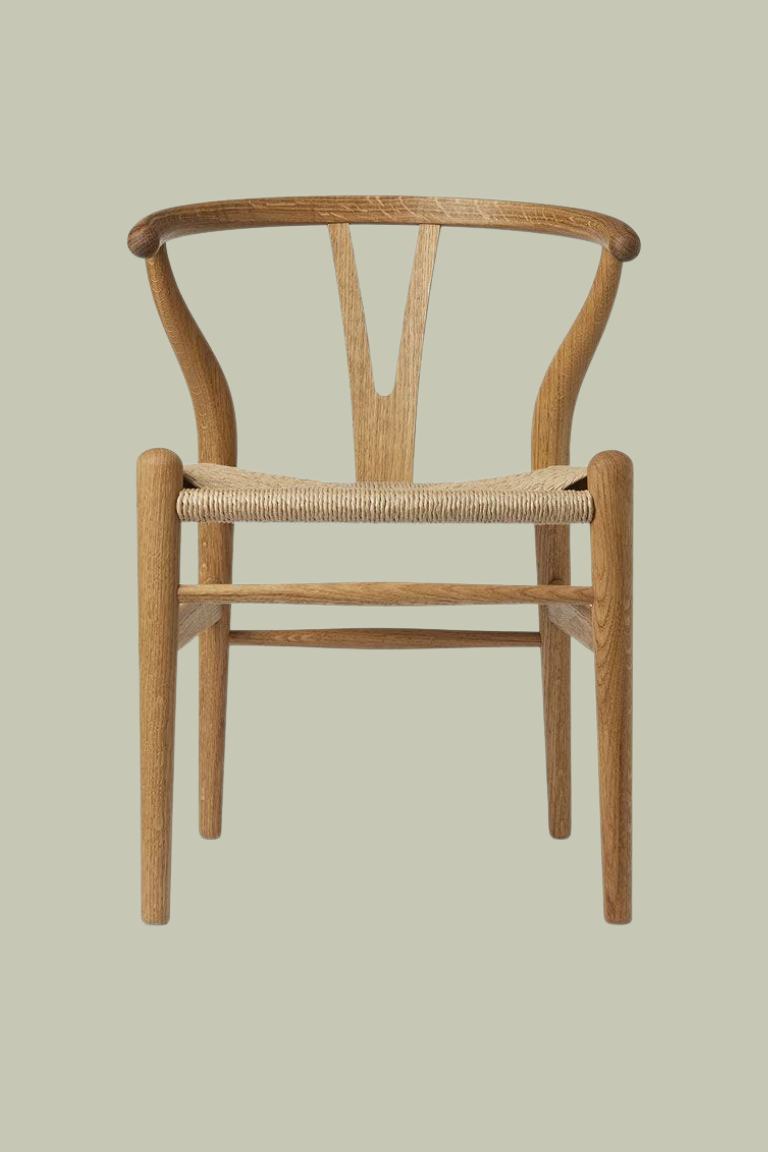
An iconic chair in kid's size? Obsessed. The 1949 Wishbone Chair has been reimagined for children in celebration of Hans J. Wegner's 110th birthday. I don't think you could find a more elegant and timeless piece for a kid's room if you tried.

Available in multiple colorways (though I am particularly fond of the Mustard color featured here) and also available in a double size (though not in Mustard), this daybed cushion is perfect to pull out for sleepovers with handy handles.

Featured in the Manhattan home tour above (though in white), the Componibili Drawers from KARTELL are a stylish and practical storage idea for your kids' room; also available in Burgundy and Orange.

Rechargeable lamps are my favorite accessory for most rooms in the home, and the kids' rooms are no exception. This mini but mighty stylish table lamp from H&M is also available in Pink and includes a three-dimmer setting.

Chill time is a brill time, and this chic Kaikoo bean bag would style a little reading corner perfectly — easy to move around as needed, plus reviewers have commented on its quality and comfort.

A large proportion of the decor for my children's rooms comes from the H&M Home kids' section — I love it. And here we are again with another scalloped-edge —and also available in Light Green and Light Gray — it's a lovely way to display books or trinkets.

A bit of squiggle, a lot of punchy color, brighten up your child's bed with this Novogratz tufted cushion; decorating with color isn't all about the walls — playful pops of color in your decor choices can make the world of difference.
Looking for more? Our edit of the back-to-school buys that will make the new school year more seamless should be on your radar, too.

Debbie is Livingetc's deputy editor (digital). She embarked on her career in the publishing industry almost 20 years ago, with experience spanning interiors and fashion brands across both print and digital platforms.
She has worked for titles including ELLE Decoration, World of Interiors, ELLE, Condé Nast Traveller, GQ, and Glamour, among others. She is a lover of all things interiors and loves planning a makeover project. She can often be found moving furniture and decor around her house for the millionth time or else watering her 50 houseplants!
